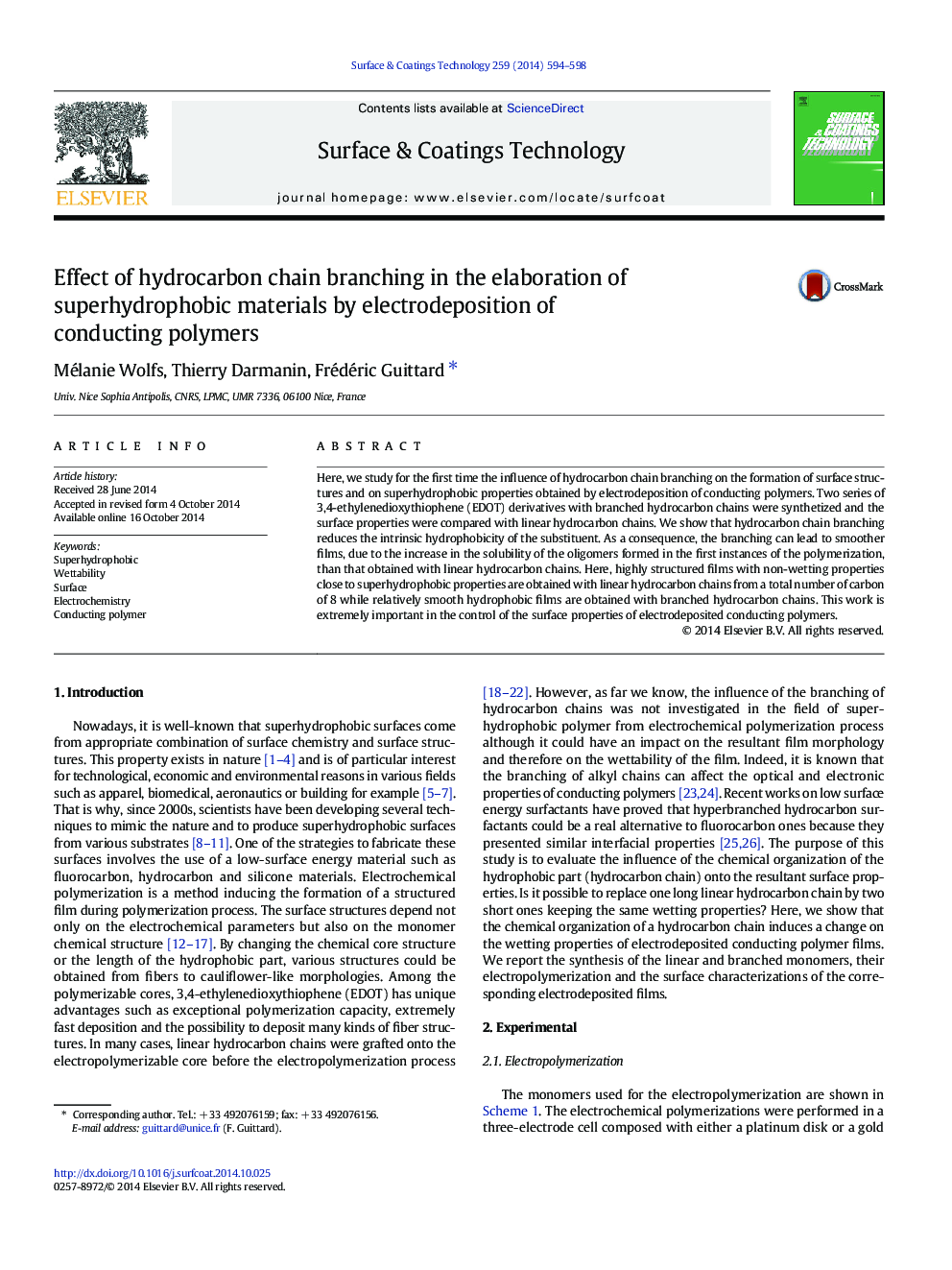| Article ID | Journal | Published Year | Pages | File Type |
|---|---|---|---|---|
| 10668045 | Surface and Coatings Technology | 2014 | 5 Pages |
Abstract
Here, we study for the first time the influence of hydrocarbon chain branching on the formation of surface structures and on superhydrophobic properties obtained by electrodeposition of conducting polymers. Two series of 3,4-ethylenedioxythiophene (EDOT) derivatives with branched hydrocarbon chains were synthetized and the surface properties were compared with linear hydrocarbon chains. We show that hydrocarbon chain branching reduces the intrinsic hydrophobicity of the substituent. As a consequence, the branching can lead to smoother films, due to the increase in the solubility of the oligomers formed in the first instances of the polymerization, than that obtained with linear hydrocarbon chains. Here, highly structured films with non-wetting properties close to superhydrophobic properties are obtained with linear hydrocarbon chains from a total number of carbon of 8 while relatively smooth hydrophobic films are obtained with branched hydrocarbon chains. This work is extremely important in the control of the surface properties of electrodeposited conducting polymers.
Related Topics
Physical Sciences and Engineering
Materials Science
Nanotechnology
Authors
Mélanie Wolfs, Thierry Darmanin, Frédéric Guittard,
